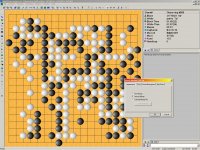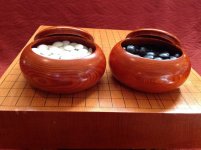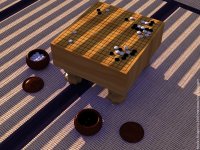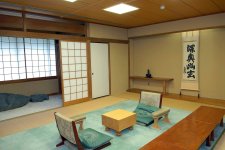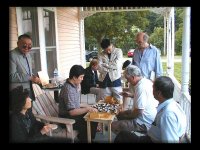I suggest you watch a few of the youtube videos about using metal detectors. Once you realize that the "beep" is also modulated in frequency, you may understand my point.
Given there apparently are a number of us missing your analogy, might you want to just out and out state it? Surely that'd take less time than playing riddles, no?
If it's that you need a skilled operator who knows what to hear/see (metal detector/measurement traces, respectively) in order to get achieve anything meaningful, then that's fine.
It's that 1% that's subjective. I'm happy with 99% today. A good (superb?) benchmark.
There is nothing wrong with op amps and my perception of the state of the art is that its on the top of a logarithmic curve, but still improving.
99% in another 20 years will be something different again. I'll look back and laugh with you at the old silicon technology when we get there. Personal taste will still be what you want it to be. That's human.
When the argument comes down to stone tools vs bronze and then bronze vs iron, then it becomes very personal and (carefully), more subjective and perhaps less relevant 😱
We agree though. Nothing is perfect. The closer you get, the more difficult it becomes to see what isn't perfect. We're not making musical instruments, art or fashion here. We shouldn't be.
Yet iron was not able to replace bronze when the goal was a non sparking tool. Those insisting that iron must be "better" because of some "better" ( but irrelevant for the purpose) numbers will eventually learn the hard way.
Given there apparently are a number of us missing your analogy, might you want to just out and out state it? Surely that'd take less time than playing riddles, no?
If it's that you need a skilled operator who knows what to hear/see (metal detector/measurement traces, respectively) in order to get achieve anything meaningful, then that's fine.
It is easier for humans to continously follow the changes in sound, and interpret and correlate them with their own movements and the characteristics of the "hidden" materials - as compared to following numbers on a screen.
If you think that visual indicators are better than the sound they try to describe, then I suggest you sell your speakers and just watch the VU-meters.

Go here Moving Coil Cartridge Head AmpsHi Robert,
Just went to have a look at the site of Lounge Audio, and it all looks quite nice ... without the silly prices some high end producers ask.
Just a question, in the text describing the MC step up amp, it is mentioned that it has an optically isolated power supply. This made me very curious to find out a bit more about how this works and what the advantages are.
Tnx for your reply, vac
Look at The Common-Base Circuit section. Take out the 9v battery and replace it with a string of photo diodes. Then shoot some white LEDs straight into the photo diodes. Power the LEDs with a variable power supply. That gets the gain/impedance control. The paper describes how a floating power supply self cancels current flow into the MC cart. The photo coupling isolation maintains the floating aspect.
It is easier for humans to continously follow the changes in sound, and interpret and correlate them with their own movements and the characteristics of the "hidden" materials - as compared to following numbers on a screen.
If you think that visual indicators are better than the sound they try to describe, then I suggest you sell your speakers and just watch the VU-meters.
Ummmmmmmm..... ?
How is that remotely relevant or a retort to what I originally wrote about not trusting people's uncontrolled listening impressions versus providing measurements that characterize the transfer function of their equipment?
It's one thing to say that "this effect changes the sound in this way", it's another thing entirely to say "okay, the changes you made have at least a remote chance of affecting the sound."
I'm speaking to the latter, which seems a safer bet when people talk about swapping components/rolling opamps or tuning power supplies.
As to the former, few agree on this effect causes that sound difference, and when there's the remotest of consensus, the effect is pretty large. (cue Scott's joke about any opamp having the compendium of sound characteristics attributed to it).
Last edited:
I worked at Alesis all through the 90's. I was playing around with a little tube preamp circuit on my bench. I wired it up with normal parts at first. So after playing around with resister types I tried rewiring it with silver wire. I started with just the ground. Low and behold it was a little cleaner sounding. I took a 3 foot section and terminated my scope input with it. I check it against a 3 ft piece of normal wire. There was less hash on the silver wire. I get to talking with the VP of engineering. He flat out rejects that this could be true. I tell him to try it out. He says "no". "Why not?" I ask. "because the math doesn't point to this being true" he says.Design methods far less than insulting those same, soulless, automaton, by-the-book EE's that y'know, make things work? Or developed most of the base components you use?
Eschewing rigor is the joyous position of being in a field where ad copy and abject subjectivism is more important than actual performance.
That was the beginning of what I still deal with when I post here. Closed mindedness. It's kind of funny really.
So one needs good ad copy to sell to the normal consumer. You are telling me you never bought anything because of an ad you saw? never ever right?
BTW my gear has been vetted more than once by Kevin Gray. Go listen to his work, there is lots of it. He has done no job his whole life other than mastering.

Time to go fishing a wait for the big hand in the sky to take you away.And since all this opamp based stuff for the past 10-15 years uses "ultra low distortion" opamps (at least the ones that do) obviously it's all of pretty much equal quality "under the hood" and so there's NOTHING MORE TO DO OR SAY. (unless ur buying boxes and "features")
Go home, get a new hobby... model trains, coins, cars, boats, stamps, woodworking, go mow your lawn (if you have one)... or <gasp> politics (another fine pastime)!
Ummmmmmmm..... ?
How is that remotely relevant or a retort to what I originally wrote about not trusting people's uncontrolled listening impressions versus providing measurements that characterize the transfer function of their equipment?
It's one thing to say that "this effect changes the sound in this way", it's another thing entirely to say "okay, the changes you made have at least a remote chance of affecting the sound."
I'm speaking to the latter, which seems a safer bet when people talk about swapping components/rolling opamps or tuning power supplies.
As to the former, few agree on this effect causes that sound difference, and when there's the remotest of consensus, the effect is pretty large. (cue Scott's joke about any opamp having the compendium of sound characteristics attributed to it).
The idea is that we don't have a proper model of how those numbers will translate into listening impressions. So they're pretty useless too - if your goal is to evaluate that subjective impression.
The metal detector guys had that figured out so they didn't try to replace the sound with numbers. They positioned the numbers as an additional information to the sound.
Since you mentioned Scott, he also said that you're actually listening to the whole circuit not just the opamp. And I also said that when you're rolling opamps, you're using the same supporting circuit, which may be optimal for opamp A but pushing opamp B towards one of its (absolute) limits. And where you can arguably hear differences. (think replacing bipolar with FET or the other way round, or one opamp being near its absolute max voltage while the other is comfortably within its parameters).
Last edited:
Personally, not a fishing sort of guy... happen to be rather allergic to fish. 🙁
However I rather do enjoy playing the Asian game of Go/Wei Qi/Baduk. 🙂
(probably would not appeal to many "engineers" since there are no exact solutions, many variations and is rather abstract and amorphous at the same time being very analytical and strategic...)
No opamps were harmed...
However I rather do enjoy playing the Asian game of Go/Wei Qi/Baduk. 🙂
(probably would not appeal to many "engineers" since there are no exact solutions, many variations and is rather abstract and amorphous at the same time being very analytical and strategic...)
No opamps were harmed...
Attachments
Robert, we're at an impasse. I'm sure Kevin is a wonderful recording engineer, and maybe I even really enjoy some of the stuff he's worked on! But his vetting of the sound of your products means as much to me as, well, the man on the moon's opinion. I'd certainly value his opinion one the usability of mixing equipment, though.
Again, anecdote is not data.
Of course I'm influenced by advertisements. And of course I have to "sell" the relevance and results of my research to keep the beast moving forward. At the end of the day, I either have to produce actionable, reproducible, results (those hard, cold, horrible things), positive or negative, or find a new pursuit. Doubly so if I want to go sit in front of a bunch of VC's and ask them for investment (which is a real possibility within the next year). Triply so given that confidence in biotech startups is, justifiably, pretty low (Theranos a public spectacle of a greater phenomenon), and standards are much higher. Quadruple if I want to see my designs, in whatever form they might eventually manifest, be realized as a product and unleashed on the world.
That's a form of rigor that a bunch of poorly-controlled listening impressions cannot achieve. Nor does it impress on this curmudgeon that you're doing any sort of real 'innovation'. Perhaps you are innovating, but without any sort of real data, we wouldn't know. If holding certain standards to data is being close-minded, I'm okay with that.
Again, anecdote is not data.
Of course I'm influenced by advertisements. And of course I have to "sell" the relevance and results of my research to keep the beast moving forward. At the end of the day, I either have to produce actionable, reproducible, results (those hard, cold, horrible things), positive or negative, or find a new pursuit. Doubly so if I want to go sit in front of a bunch of VC's and ask them for investment (which is a real possibility within the next year). Triply so given that confidence in biotech startups is, justifiably, pretty low (Theranos a public spectacle of a greater phenomenon), and standards are much higher. Quadruple if I want to see my designs, in whatever form they might eventually manifest, be realized as a product and unleashed on the world.
That's a form of rigor that a bunch of poorly-controlled listening impressions cannot achieve. Nor does it impress on this curmudgeon that you're doing any sort of real 'innovation'. Perhaps you are innovating, but without any sort of real data, we wouldn't know. If holding certain standards to data is being close-minded, I'm okay with that.
The idea is that we don't have a proper model of how those numbers will translate into listening impressions. So they're pretty useless too - if your goal is to evaluate that subjective impression.
Best to start with a much simpler problem: is it audible? After you do that consistently, then move on to differentiating said audibility.
As to the entirety of a circuit -- of course. Isn't the implementation inherently baked into an end-to-end measurement? I mean, this is the very same thing I've harped on.
I forgot all about that game till now. I went to a hippie school for 5th through 8th grade and a bunch of students played that. Not me though. I did animation, welding, printing and glass blowing.However I rather do enjoy playing the Asian game of Go/Wei Qi/Baduk. 🙂
(probably would not appeal to many "engineers" since there are no exact solutions, many variations and is rather abstract and amorphous at the same time being very analytical and strategic...)
No opamps were harmed...
As to the former, few agree on this effect causes that sound difference, and when there's the remotest of consensus, the effect is pretty large. (cue Scott's joke about any opamp having the compendium of sound characteristics attributed to it).
As for determining the cause-effect relationship. Anyone that has been involved with "change management" in complex computer systems can tell you stories about how they made a change in software A, at which point the whole system crashed or behaved erratically. And how the software engineers couldn't find any fault with the new software. And that because indeed A was per specs, but it happened to now trigger a bug in connected software B.
Back to audio, changing a decoupling capacitor from poly to ceramic may produce some audible bad effects, but you shouldn't instantly decide that "ceramic is bad" - as what it actually did may had been to reveal a problem with the upstream power regulator.
Go is quite a fun game. Frustrating because my roommate is really, really good at board games. So is Arimaa, which makes the permutations of Chess look trivial.
Me, I'm a big fan of Calvinball:
https://xkcd.com/1002/
Me, I'm a big fan of Calvinball:
https://xkcd.com/1002/
Glad I'm not you. I'd be driven to playing Go with Bear with such things as you must be concerned with.Robert, we're at an impasse. I'm sure Kevin is a wonderful recording engineer, and maybe I even really enjoy some of the stuff he's worked on! But his vetting of the sound of your products means as much to me as, well, the man on the moon's opinion. I'd certainly value his opinion one the usability of mixing equipment, though.
Again, anecdote is not data.
Of course I'm influenced by advertisements. And of course I have to "sell" the relevance and results of my research to keep the beast moving forward. At the end of the day, I either have to produce actionable, reproducible, results (those hard, cold, horrible things), positive or negative, or find a new pursuit. Doubly so if I want to go sit in front of a bunch of VC's and ask them for investment (which is a real possibility within the next year). Triply so given that confidence in biotech startups is, justifiably, pretty low (Theranos a public spectacle of a greater phenomenon), and standards are much higher. Quadruple if I want to see my designs, in whatever form they might eventually manifest, be realized as a product and unleashed on the world.
That's a form of rigor that a bunch of poorly-controlled listening impressions cannot achieve. Nor does it impress on this curmudgeon that you're doing any sort of real 'innovation'. Perhaps you are innovating, but without any sort of real data, we wouldn't know. If holding certain standards to data is being close-minded, I'm okay with that.
All I can say is I have had my fill of gear that measures great and sounds so-so or even boring. So when I read a bunch of specs it is as meaningless as well, "the man on the moon" as you say.
Your labeling of Kevin Gray as some "mixing/recording" guy is so clueless as to be jaw dropping in the breath of your ignorance about the guy. Sorry to be so blunt.
As for determining the cause-effect relationship. Anyone that has been involved with "change management" in complex computer systems can tell you stories about how they made a change in software A, at which point the whole system crashed or behaved erratically. And how the software engineers couldn't find any fault with the new software. And that because indeed A was per specs, but it happened to now trigger a bug in connected software B.
Back to audio, changing a decoupling capacitor from poly to ceramic may produce some audible bad effects, but you shouldn't instantly decide that "ceramic is bad" - as what it actually did may had been to reveal a problem with the upstream power regulator.
Thank (insert deity of choice) for revision control!
All these valuable diagnostics to actually know what you're doing, and yet another reason why measurements are so useful in doing development and characterize what the heck you're doing. So either you know we're in agreement on this topic or accidentally talking past each other?
Glad I'm not you. I'd be driven to playing Go with Bear with such things as you must be concerned with.
Quite, remember I have no soul. 🙂 Nor have any interest in innovation or making progress!
All I can say is I have had my fill of gear that measures great and sounds so-so or even boring. So when I read a bunch of specs it is as meaningless as well, "the man on the moon" as you say.
And? I can write the same thing and it's equally meaningless.
Your labeling of Kevin Gray as some "mixing/recording" guy is so clueless as to be jaw dropping in the breath of your ignorance about the guy. Sorry to be so blunt.
I'm totally ignorant to the guy, so I'm not offended at all. Which only furthers my point about the value of his opinion on the sound of your gear. He may be an invaluable resource in so many ways, but no free passes are given. There tons of people in my field that you're jaw droppingly ignorant to, and if they made difficult-to-defend claims, data would be demanded. I don't see why that's so hard to understand.
Last edited:
Name one. Teach me somthin'.There tons of people in my field that you're jaw droppingly ignorant to, and if they made difficult-to-defend claims, data would be demanded. I don't see why that's so hard to understand.
I understand. I worked in the audio manufacturing/design industry since the late 80's.
Oh BTW Is there any audio gear, commercially released, that you designed?
Last edited:
- Status
- Not open for further replies.
- Home
- General Interest
- Everything Else
- What is wrong with op-amps?
